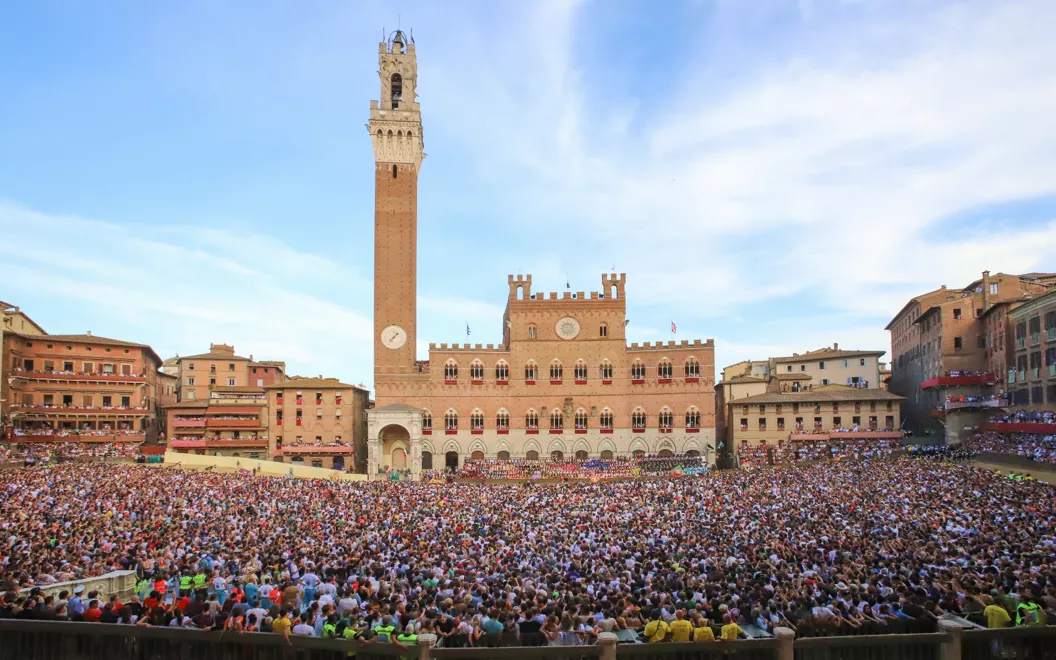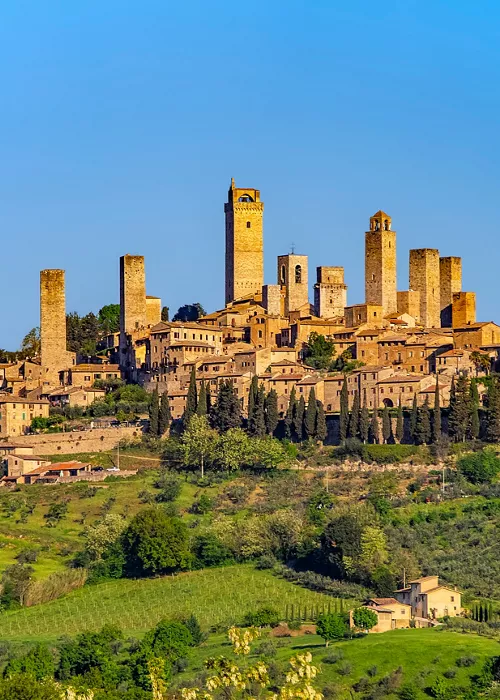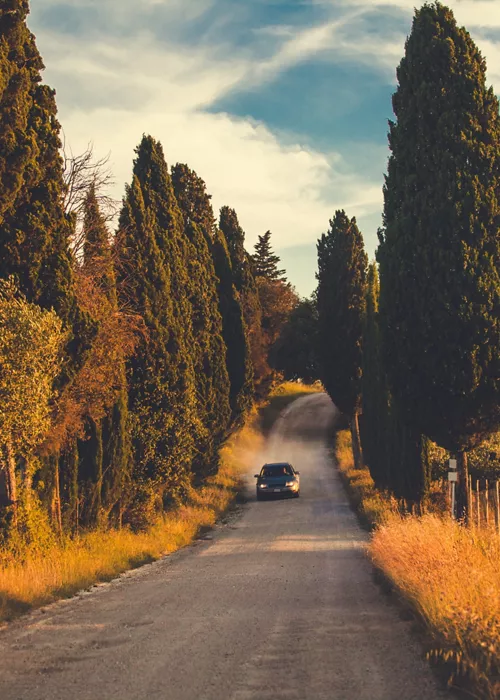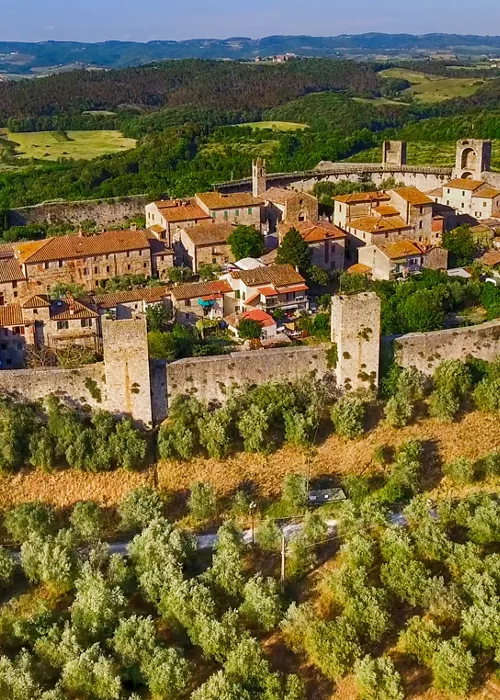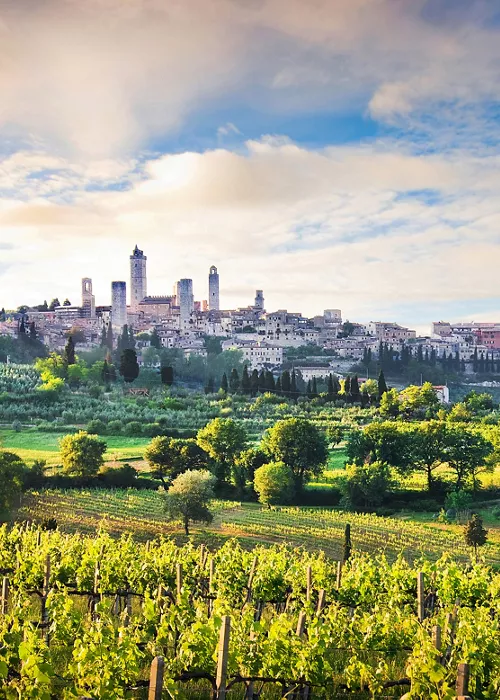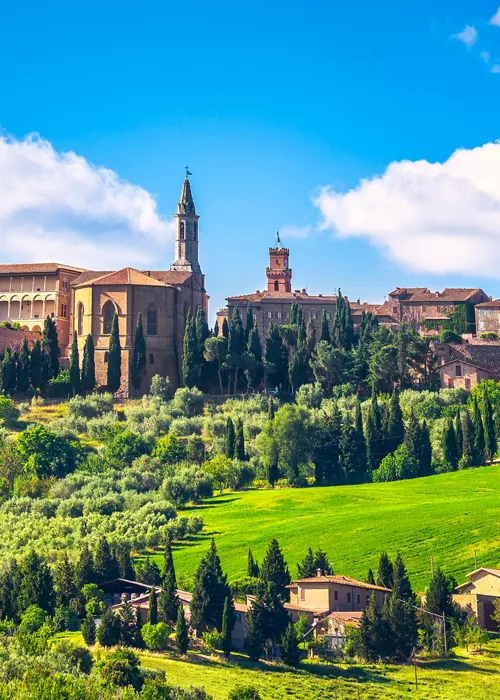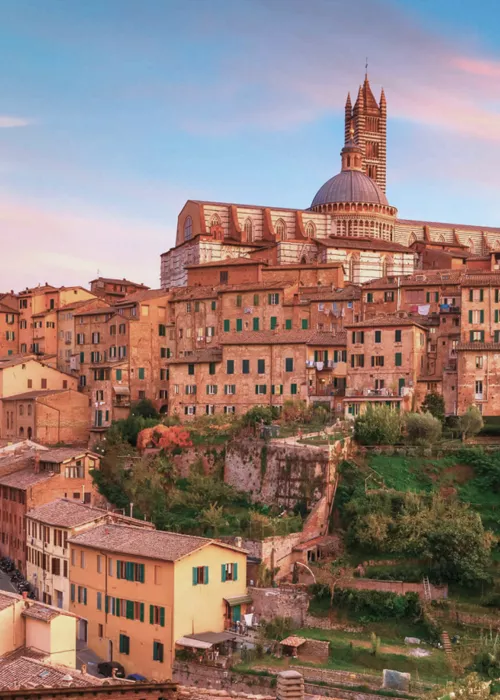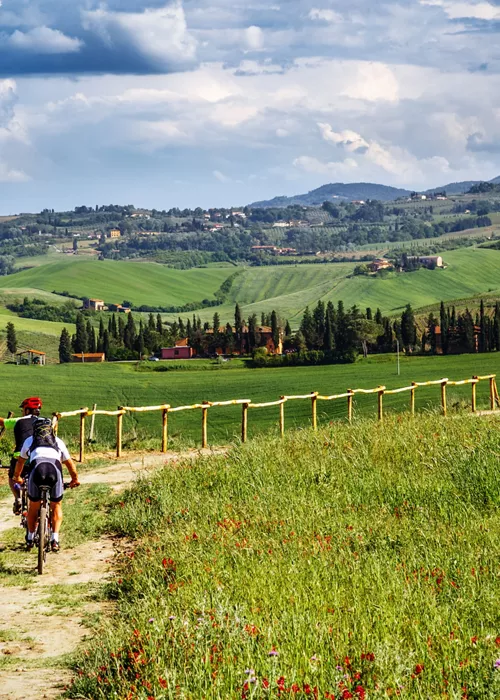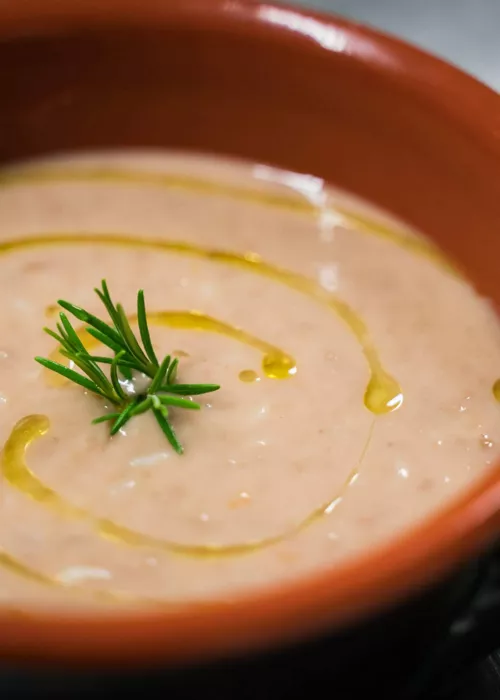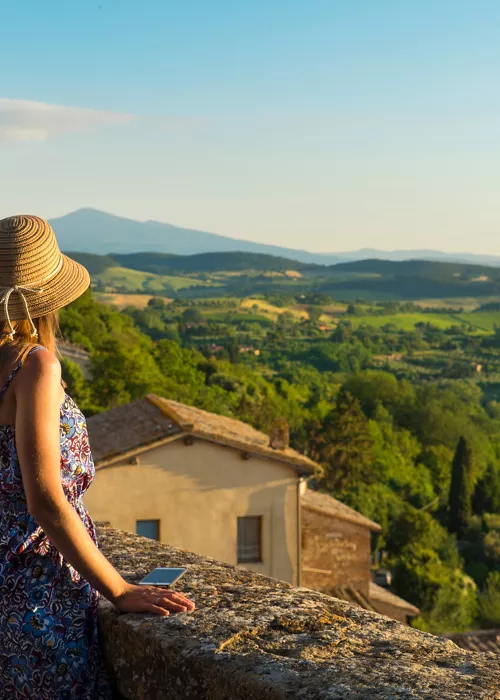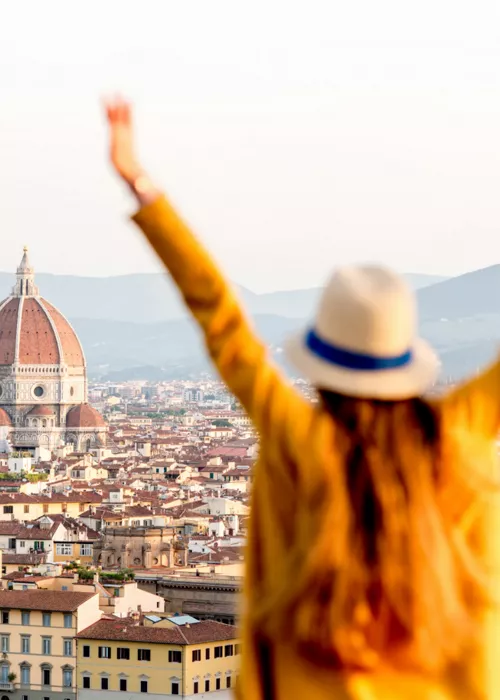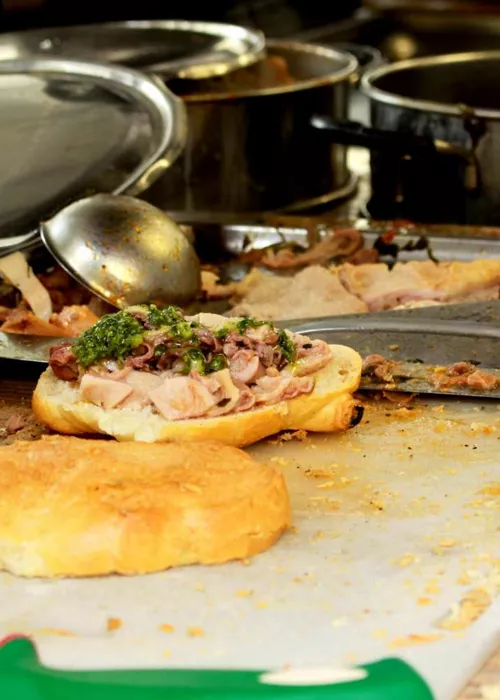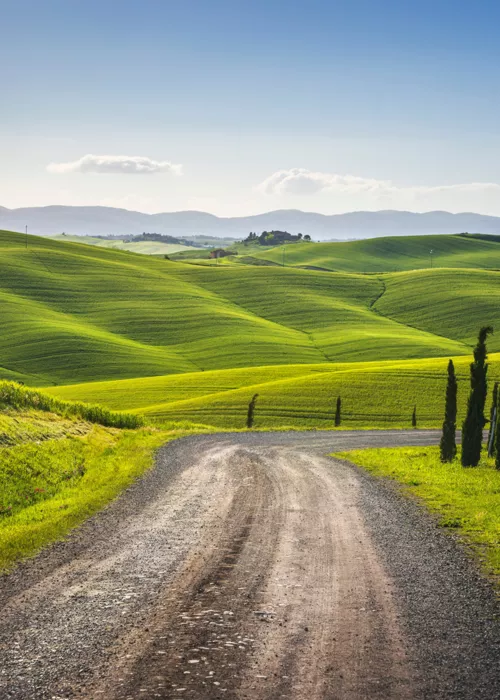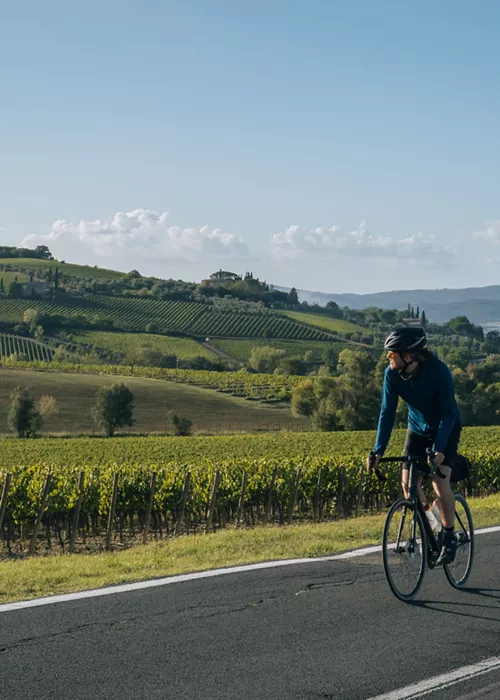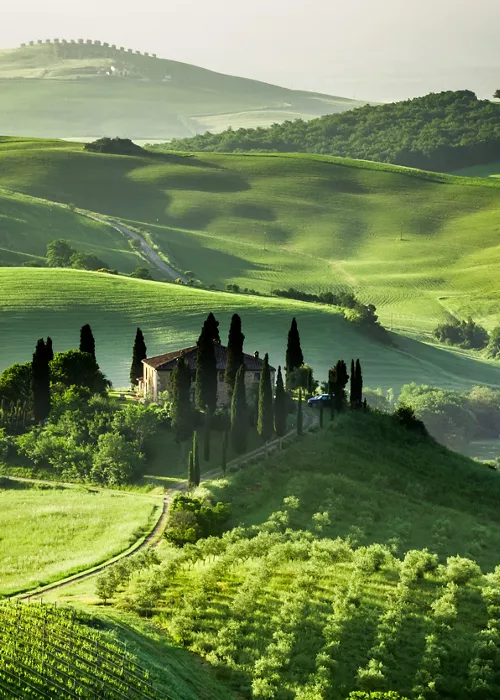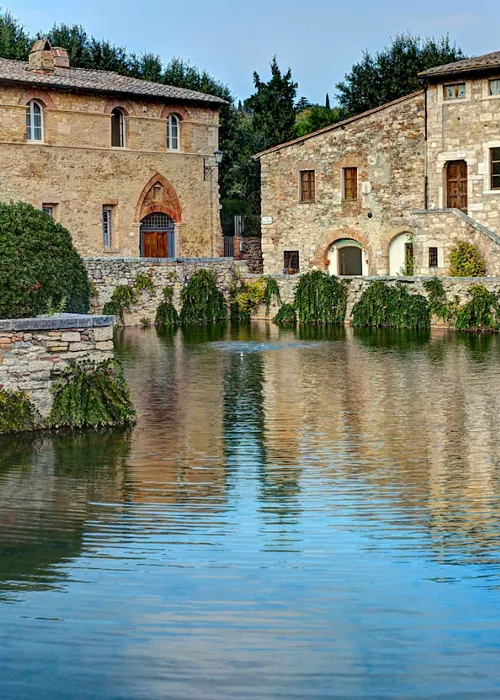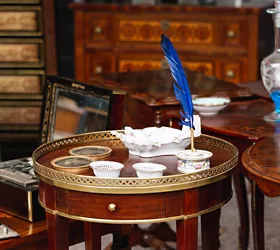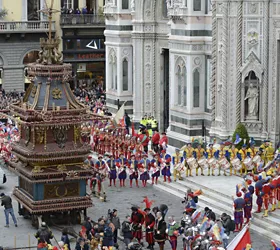The Palio di Siena - a highly renowned Italian-style summer event
3 minutes
The two principal events of the traditional competition are held every year in July and August. The first race of the year, designated as the ‘Palio in honour of the Madonna di Provenzano’, occurs on 2nd July and the second race takes place on 16th August and is referred to as the ‘Palio in honour of the Madonna dell'Assunta’.
The summer of 2022 has been a particularly significant period as it marks the return of the tournament after a pause of two years on account of the pandemic. It was only during the conflicts of the last century that the competition had ever been suspended.
We should consider a few details concerning the ancient competition so that when we arrive in the central square of Siena to attend the 2022 or any future Palio events we will be fully aware of its history and organisation.
The relative city wards preparing for the 2022 edition of the Palio di Siena
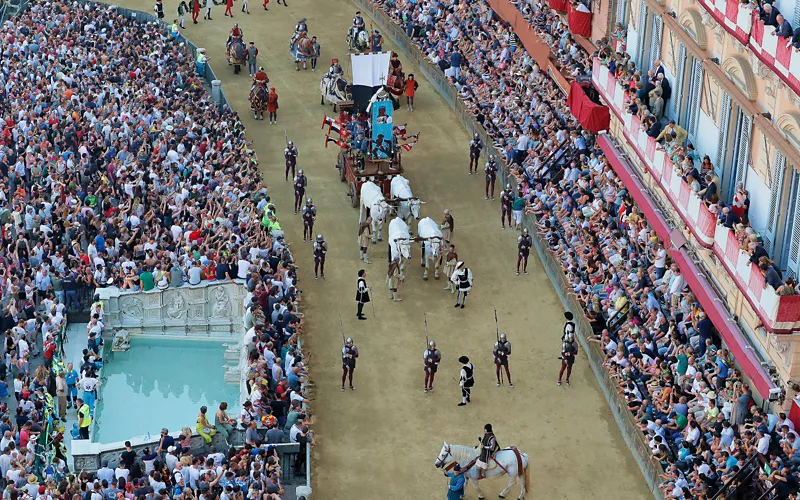
On 2nd July 2022 the horses ran against each over the circular course in the central square at the Palio competition held in honour of the Madonna di Provenzano and the trophy was won by the Drago district. The second race will occur on 16th August and the wards engaging in this race will be Onda, Selva, Chiocciola, Tartuca, Lupa, Giraffa, Civetta, Leocorno, Nicchio and Valdimontone. Following selection by a draw, traditional rivalries will be settled in particular between the Civetta and Leocorno, the Nicchio and Valdimontone and the Tartuca and Chiocciola districts.
Every year, according to a system of draws and selection by rotation, 10 of the 17 districts of the city participate in the Palio races. In any case none of the wards are excluded from more than two consecutive events, without prejudice to the occurrence of particular conditions.
The horses, which are ridden bareback, will enter Piazza del Campo together with the jockeys shortly before seven o’clock in the evening. For this special occasion the circular track around the square is covered with a thick layer of tufa dust. The arrival of the horses is loudly announced by the explosion of firecrackers. The race - or carriera, as it is often referred to, using the local Palio jargon - now begins. The fastest horse and, that is, the first horse that completes three laps around the square, running in the clockwise direction, will win the race.
The drappellone, the cloth banner trophy awarded to the successful district and which is also referred to as the ‘cencio’ (old piece of rag) in the Sienese vernacular, is painted and decorated by artists selected on each occasion by the Municipal authorities. The banner is ritually transported by the winners to the Collegiate Church of Santa Maria in Provenzano in July and to the Duomo (the Cathedral of Siena) in August.
An ever-enduring tradition
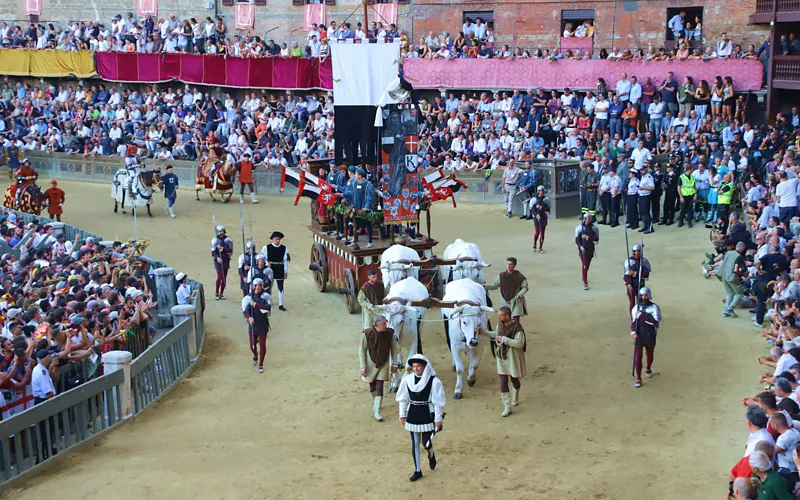
The Palio di Siena has truly ancient origins and the fascinating tournament has never lost its charm, nor has the passionate sense of dedication nurtured by the people of Siena ever waned. The tournament, which remains an important event, forming an essential part of the culture and character of the city and its people, originated in the Middle Ages, the glorious era of the former noble Republic of Siena. The earliest document that refers to the Palio dates back to 1238, while records that specifically mention the first equestrian competition held in the square were compiled in 1633. The precise definition of the wards, which is still applied, dates back to 1729 and each district is distinguished by its own coat of arms. The relative crests and insignia are still proudly displayed today by the inhabitants of every ward of the city.
The Palio race programme
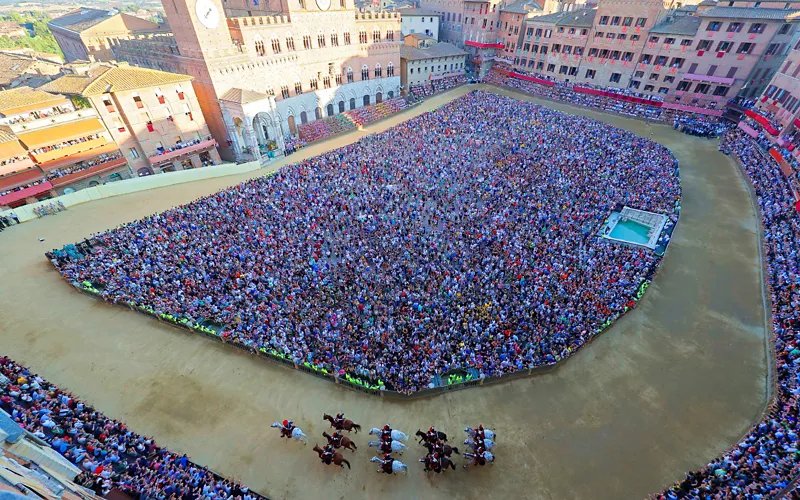
The Palio in honour of the Madonna dell’Assunta actually lasts from the 13th to 16th August, when a series of rituals that have remained unchanged over the centuries are performed: the blessing of the horses, the draws, the trial runs and celebrative evening meals.
The Palio is always preceded by a procession with numerous figures dressed in period costumes, including drummers, standard bearers, jockeys and the flag-wavers, reminding us of the pomp and splendour of the ancient Republic of Siena. The procession begins on the day when the Palio is held, on 16th August at 3.30 pm.
At the end of September or in early October the cena della vittoria is arranged to celebrate the victory of the district that has won the competition. On this occasion their horse is dressed up and festively adorned.
The people of Siena have always been convinced that the Palio is really a year-long event.
Some useful advice for visitors to Siena
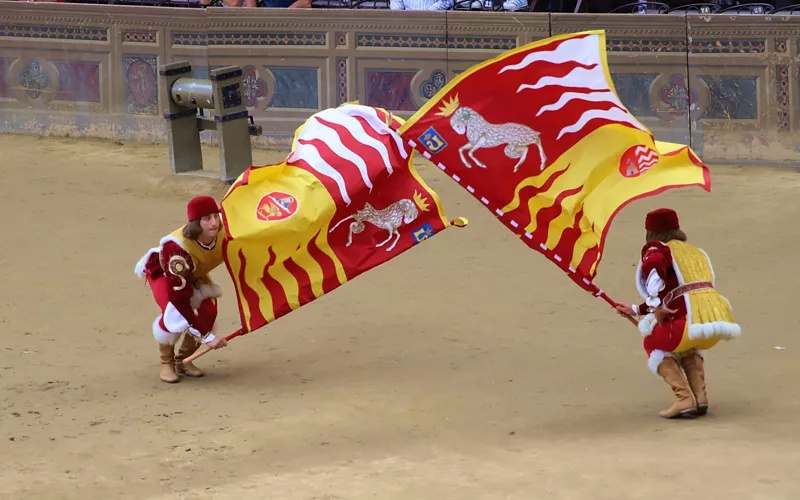
- The Palio is a great event, from both the historical and religious point of view. It is of course a typical local festivity, however it has definitely acquired considerable fame at the international level. Anyone who wishes to attend the event is therefore advised to book accommodation well in advance. Many options are available, including hotels in the historic centre of the city, where one may note a lot of contagious excitement and even a sense of confusion. Many quiet rural guest houses are situated in the surrounding countryside.
- Everyone can freely attend the Palio event held in Piazza del Campo, the shell-shaped central square of the city. However, a fee will be requested for seats on the stands or terraces and for access to the windows of various apartments overlooking the square. There is no official ticket office. Visitors will have to speak to local citizens and seek their advice regarding how to participate in the celebrative dinners.
- Go to the square at least three hours before the race begins and do not bring any cumbersome objects with you, such as seats or pushchairs. It should be noted that entry is not permitted for children under the age of 12 and you will not be allowed to leave the square before the end of the horse race.

